How Often Should You Update a Blog Post for SEO?

One standard piece of advice I give to bloggers about content marketing is to identify your pillar content, your flagship posts, and the number of posts that have evergreen value. Then, work hard to keep them up to date.
One topic that I've never really explained – which seems to be largely ignored as a question online – is how often you should keep those new posts up to date.
Should you make a change and update it every week? Every month? Every quarter? Just once a year?
It's simple, actually: it all depends. It depends on the topic, your blog, the content of the post, and many other factors. Whatever answer you think is obvious, I can assure you that someone else has a different one.
Before we dig in, though, I want to direct you to a few other posts on similar subjects that I'll be referencing along the way. If you haven't read these, consider checking them out before continuing.
These three posts can answer three questions for you. What's a good blog post frequency, and how often should you blog (writing, publishing, and publishing schedule)? How long is the average lifespan for a piece of quality content? And, if you want to update old posts, how should you do it?
Only one question is left once you know all of that: how often should you update your old content for search engine optimization?
Picking Content to Update
The first thing to recognize is that not all blog posts are created equal (even if you had a similar process implemented to develop them). Some content will be better than others. Some of your new blog posts will pull in a ton of views, links, and organic traffic, and those SEO metrics will be apparent in Google Analytics and Ahrefs. Some won't get the time of day.
Consider the Pareto Principle, the 80/20 rule. When averaged across your site and across time, 80% of the value of your site will come from 20% of your blog posts. That means if you have 100 blog posts on your site, only 20 of them are the driving factor in your success.
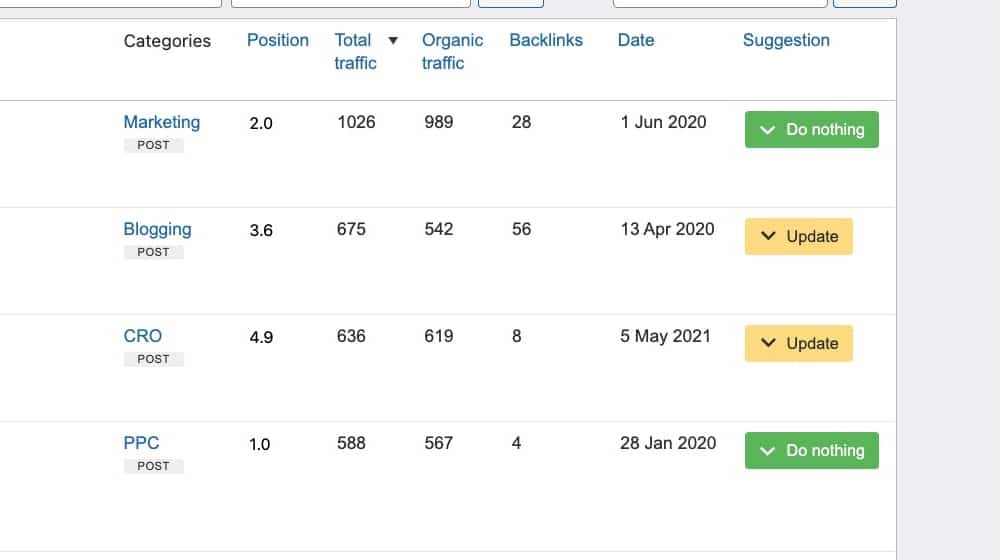
(Screenshot of the Ahrefs SEO WordPress plugin after performing a content audit)
So, the first question is, which content do you update? There are three options.
- Pick the content that performs. These posts already did well; keep them updated to maintain their "top performer" status.
- Pick the content that under-performs. If you can add a 21st post to the list of articles that bring value, you get even more out of it.
- Do both. Just go through your content chronologically and update everything on a rolling, regular basis.
The truth is, of course, not all content is worth updating. Consider these posts from my archives:
If you had to pick one of these, which one would you update?
The research study is potentially valuable but requires a high bar to update. Scraping and analyzing that much data again, and comparing it to data from two years old, could be beneficial as link bait and as the foundation of future content. On the other hand, it practically requires writing all-new content to do it.
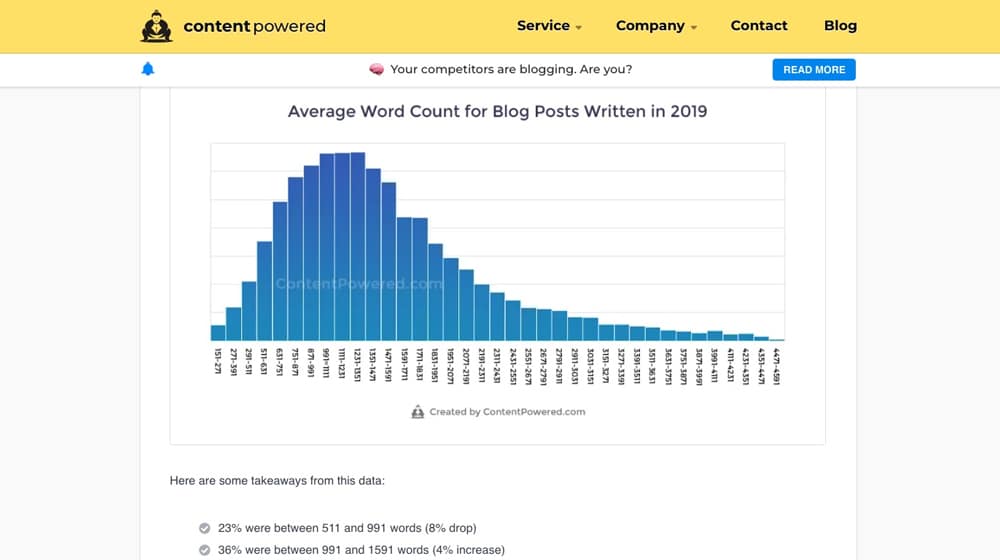
Updating the post about Medium might not be relevant. Not much has changed with the site in the last couple of years, at least not in a way that changes my opinions of the platform. I could update it with some new information, but honestly, that post isn't in my 20% in the first place, and I'm not sure an update would kick it up there.
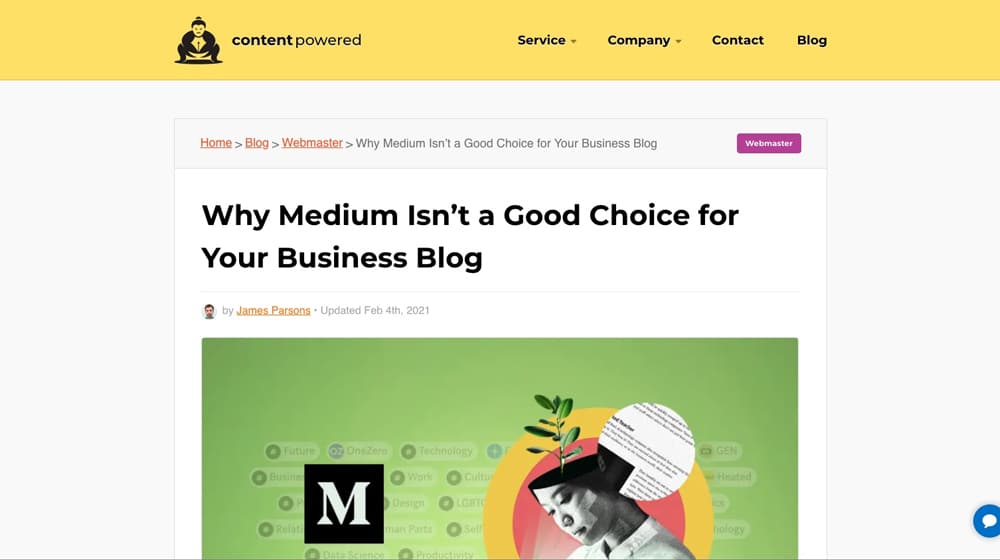
The infographic was a compelling linkbait article but is very clearly dated. I would have to do some moderate updates to it, including changing graphic design and some of the less evergreen advice. It could be a good idea – infographics are still great for short-lived link bait – but it also requires more graphical editing and not just text editing in WordPress.

I would probably pick the research study of the three, even though it's a lot more work. It already has some links and value, so it's easy to augment and make relevant for another round through the promotion machine. But, an argument can be made for all three of them.
That reminds me, I need to update that infographic and change "2020" to "2022":

Overall, you can pick a piece of high-quality content to update if it fits a good reason to improve it.
- It's dated and irrelevant but can be made relevant by updating it. For example, you could quickly turn a holiday gift guide for 2020 into a 2022 guide.
- When the content used to perform well, something changed (in the industry, in Google search, in the keyword, in your site) to make it underperform, and an edit could fix it.
- If modern sensibilities have changed, you may want to update your post to review and improve your terminology or humor to make it more applicable to your target audience.
- When something about your business changes, it may require a shift in how old content is conveyed—for example, new or removed products and services.
Generally, most people choose to update relevant content that has already proven valuable. A post with many links, a decent search rank, and some website traffic is more straightforward to chase than it is to optimize a post that never gained traction. After all, you can upgrade a piece of content all you want, but if no one is searching for the topic it targets, you aren't gaining anything from it.
Picking the Degree of Updating
The second decision you need to make – and generally made on a per-post basis – is picking how much you want to update a post. Typically, I see three or four kinds of updates.
1. The first is the quick refresh. A quick refresh is just a fast, 30-minute overview of a post. Do things like:
- Remove dated humor—a joke about a fidget spinner or an outdated meme drag a post down.
- Update links to newer resources, especially if you reference them as current advice.
- Add internal links to relevant other content you've published since the last time you touched this one.
- Alter/change any significant points you make that have since changed. For example, a website speed post from five years ago wouldn't have mentioned Core Web Vitals, so make mention of them now.
- Make sure things like images are up to snuff.
The goal here is to make the changes that need to happen to make the post feel freshly written, even though it's not.

You don't need to edit the core content unless it's straight-up wrong, though.
You may be able to get ideas from your blog comments. Perhaps a reader spotted an error that you can correct or presented a new piece of information that you can add to your post. This process doesn't take long, and it's considered good housekeeping.
2. The second is the detailed refresh. This concept is the same as the first, except you also do a more detailed read-through of all of the points you make and rewrite anything that doesn't jive with your current advice, way of thinking, and industry.
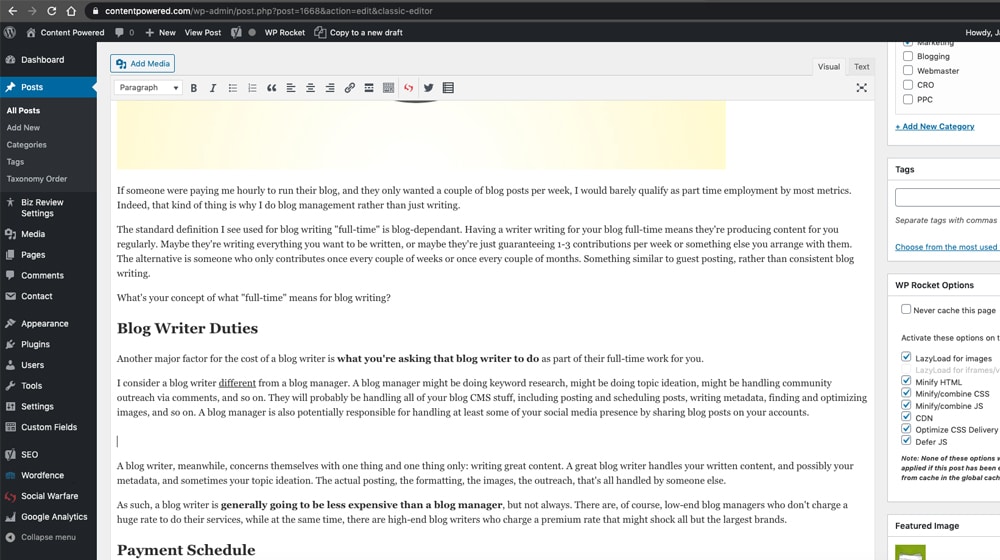
Sometimes this is easy, and sometimes it requires a more total revamp.
3. The third is the rewrite/revamp. Replace the images, replace the links, replace the writing; update everything to be congruent with your current blog writing style. This method is most useful for posts where the main salient points are still accurate, but everything else is low-quality filler content and needs to go.
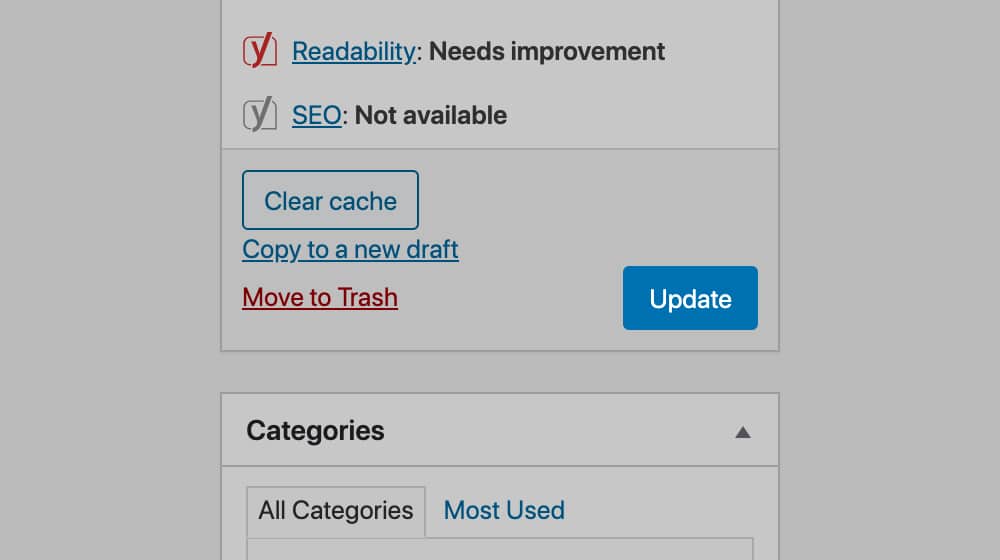
Everyone evolves; your voice and tone may have changed, your opinions may have changed, etc.
4. The fourth is the total replacement. Take the Medium post above; if that post had some good backlinks, and I have changed my mind to believe Medium is a good platform for a small business blog now, I could redo the whole thing while keeping the keywords and links.
You can see why I say three or four; these all have enough overlap that you can condense them down into three if you want.
Generally, you're going to either do the low-end refresh or the high-end revamp. The complete replacement is typically best saved for extreme circumstances when you desperately need to rescue an old post to save some backlinks. Such an instance rarely happens. You often want to update statistics, update advice, change a few facts and some jokes, and that's about it. Luckily, you don't typically need to edit a post to refresh it enough for search engines to consider it "updated."
You also have a decision to make. Do you keep the dates?
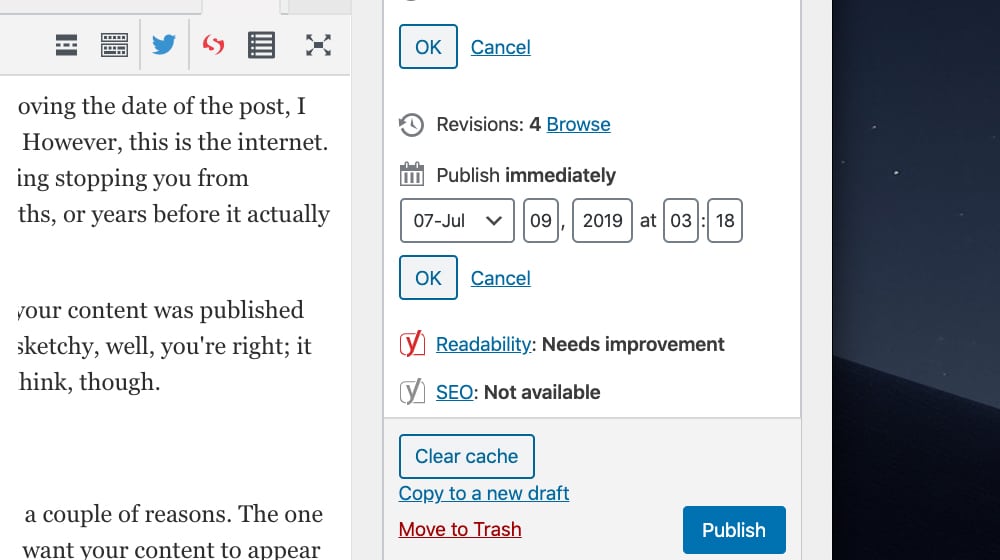
Generally, Google will display a date in their snippet to find one. It will be the date of publication, or the date it was last updated, whichever they have. If you don't have a date publicly available, they generally won't display it. They will, however, still have a date attached based on when they indexed the content, which is relevant for time-constrained searches.
I generally assume that the best article is a recent one; the older a post is, the less likely people will want to check it, especially if it's a time-sensitive topic. No date, in that case, is better. In any case, you can read more about my analysis of dates here.
Deciding How Often to Update
How often should you keep a piece of content updated? It depends.
In my mind, it primarily depends on how out of date the content gets.
Updating the post to modern relevance doesn't help much because the core info isn't relevant. A piece of content that falls out of date very quickly, like some news reporting on the newest Google algorithm, generally shouldn't be updated very often. It's valuable as a historical artifact and can be updated to change "last year" to "in 2021" or whatever, but that's about it.
You should update a piece of more evergreen content as often as you need to keep the information in it updated. If it's a topic that doesn't change much, you can edit it once a year. If it's a topic that evolves quickly, you might want to update it more frequently. You can update something like that famous Backlinko post about Google's search ranking factors every time Google updates or changes its algorithms, for example.

On the note of Backlinko's post, here's an image of that article from a post that I wrote last year:
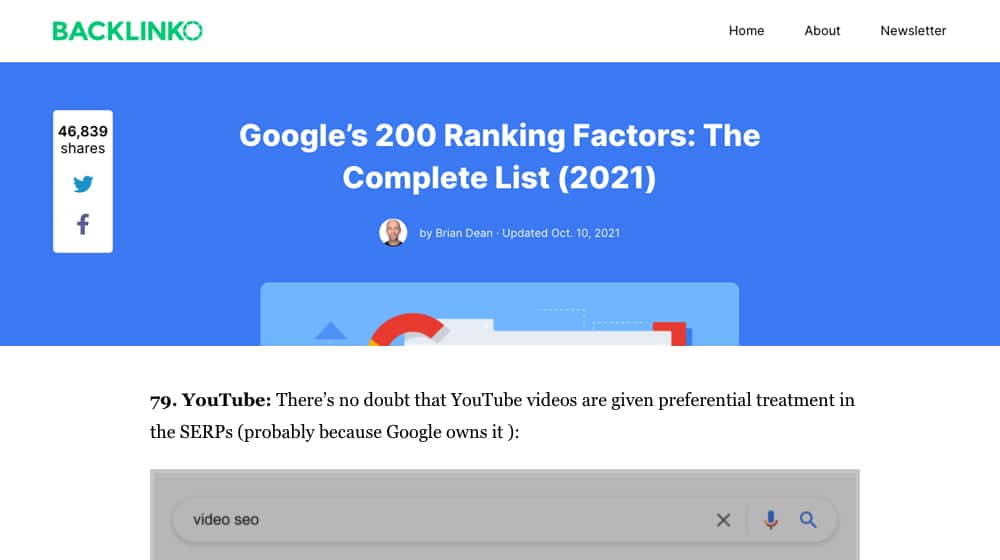
Here's another image from a post that I wrote back in 2019:

Do you see the pattern here? Do you see how often he keeps that post updated and why it performs so well?
Some quality posts can be updated more frequently, like monthly or quarterly. For example, posts that link to "the top 20 apps and software for accomplishing X task" can be regularly kept up to date. Go through all the links and remove any that are dead, replace them with newer ones, drop software you don't like, add newcomers to the field, and so on. We live in a world where businesses are bought, sold, collapsed, make significant shifts that mean you don't trust them anymore, and so on, pretty much constantly. A resource like that needs to be kept up to date to have the most value.
I pretty much would never recommend updating a post weekly or on a daily basis unless there's an excellent reason to do so. It's a lot of work for relatively little return, so it has to be a post about a very quickly-evolving topic that would quickly fall out of date if you left it alone. Blogging at a high level of competition is already a ton of work as it is, so you want to do everything you can to avoid burnout and maximize performance.
Here's a robust process you can follow.
- Start by identifying which blog content deserves updates and which doesn't matter and can languish.
- Decide how often you should refresh that content.
- Set up alerts to remind yourself to update that content on a rolling basis.
- Over time, build a rolling list of fresh content to update.
- Pay attention to significant shifts and industry trends. Is the old post starting to get attention? Update it! Is there a new trend on something you wrote about before? Did you notice your eCommerce conversions drop? Update it!
- Occasionally review older content via a content audit and determine if it needs to be refreshed or removed.
And, of course, monitor that content to see if your changes improve your digital marketing growth. Don't forget to cycle your content through your promotion engine to put it in front of your potential customers on social media, email, and other channels.
The more you can do, the better off your content will be.
How often do you update your blog posts? Do you have a system in place to remind you, or how do you choose which blog posts to update first? Do you have any questions about my process? I'd love to hear from you in the comments below!



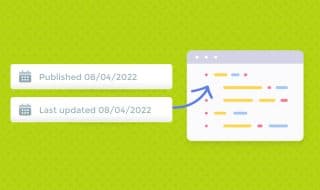






Comments